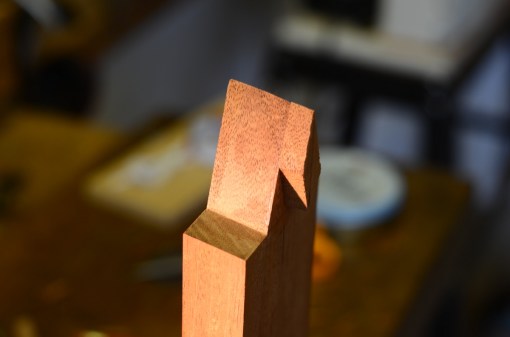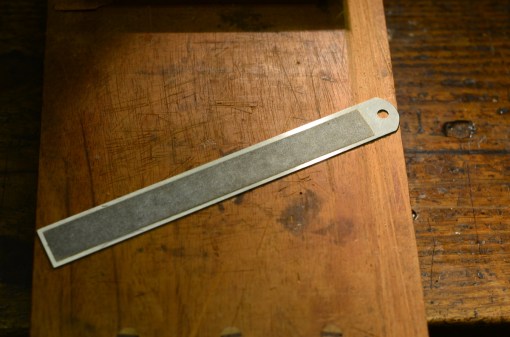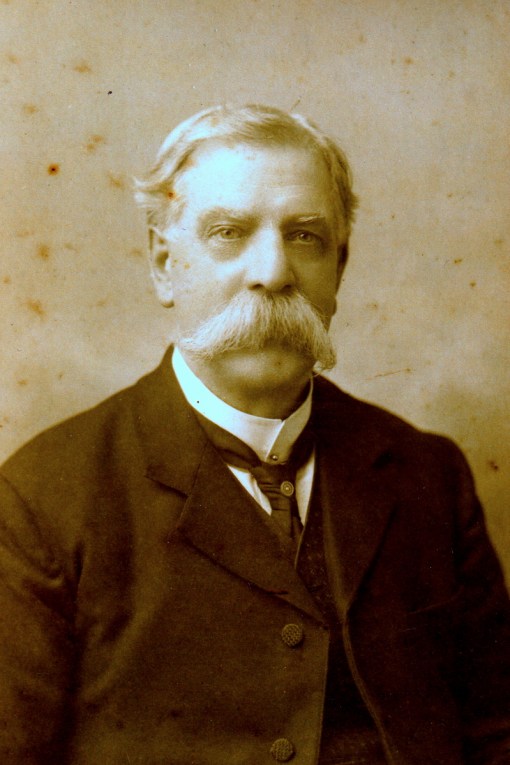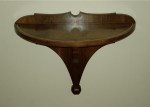Moving on from my previous post about marking out a V joint, it’s time to cut and trim it to shape.
First, I saw out the V in the headstock, keeping close to the lines but being careful not to saw past them. I try to be brave in sawing up to the line at the narrow end of the V because that’s the hardest part to clean up later.
Next, I stop to put a fresh edge on the chisel that I’m going to use. When it will slice through tissue paper, I reckon that it’s sharp enough.
I clean up the V, paring from both sides towards the middle. Final cuts are carried out with the chisel resting in the knife line that marked out the joint. A small square is useful to check that the sides of the V are flat. The most difficult part of the joint is the apex of the V but a slicing cut with the corner of the chisel will remove the last bit of waste.
Here’s the female part of the V joint in the headstock finished. It shouldn’t be necessary to touch it again.
Now I cut the male part of the joint on the neck, starting with the angled shoulders. I chisel out a ramp for the saw in the usual way…
… and then saw down to the V, keeping clear of the lines.
I mark the starting point of the cuts for the sides of the V on the endgrain…
… place the neck in a vise, tilting it so that the cut will be vertical, and …
saw off the sides of the V with a tenon saw.
I mark and keep the pieces that I’ve just sawn off. They’ll be useful later.
Now I clean up the V and its shoulders with a chisel, paring in from both sides as I did for the headstock.
Here it is almost finished.
The neck and headstock are now tested for fit. Below is the view from the fingerboard side of the neck.
And here’s the view from the back of the neck.
As you can see, there’s a problem at the apex of the V, where a shadow shows that the neck isn’t quite deep enough to fill up the whole of the female part of the joint in the headstock. (My stock of mahogany for necks is planed up at a thickness of 25mm which means that I always run into this difficulty.)
The solution is to add a little extra depth at the apex of the V. This is where the offcuts that I saved come in handy. I prepare a small piece from one of these…
and glue it on, taking care that the direction of the grain in the extra piece is orientated in the same way as the grain of the neck.
When the glue is fully hard…
… it’s sawn roughly to shape…
… and trimmed with a chisel. This addition will be invisible in the completed joint.
The last step is to make sure that everything fits to perfection before glueing up. I’ll discuss how to do that in the next post.
Click on any of the thumbnails below for larger pictures.
















































































